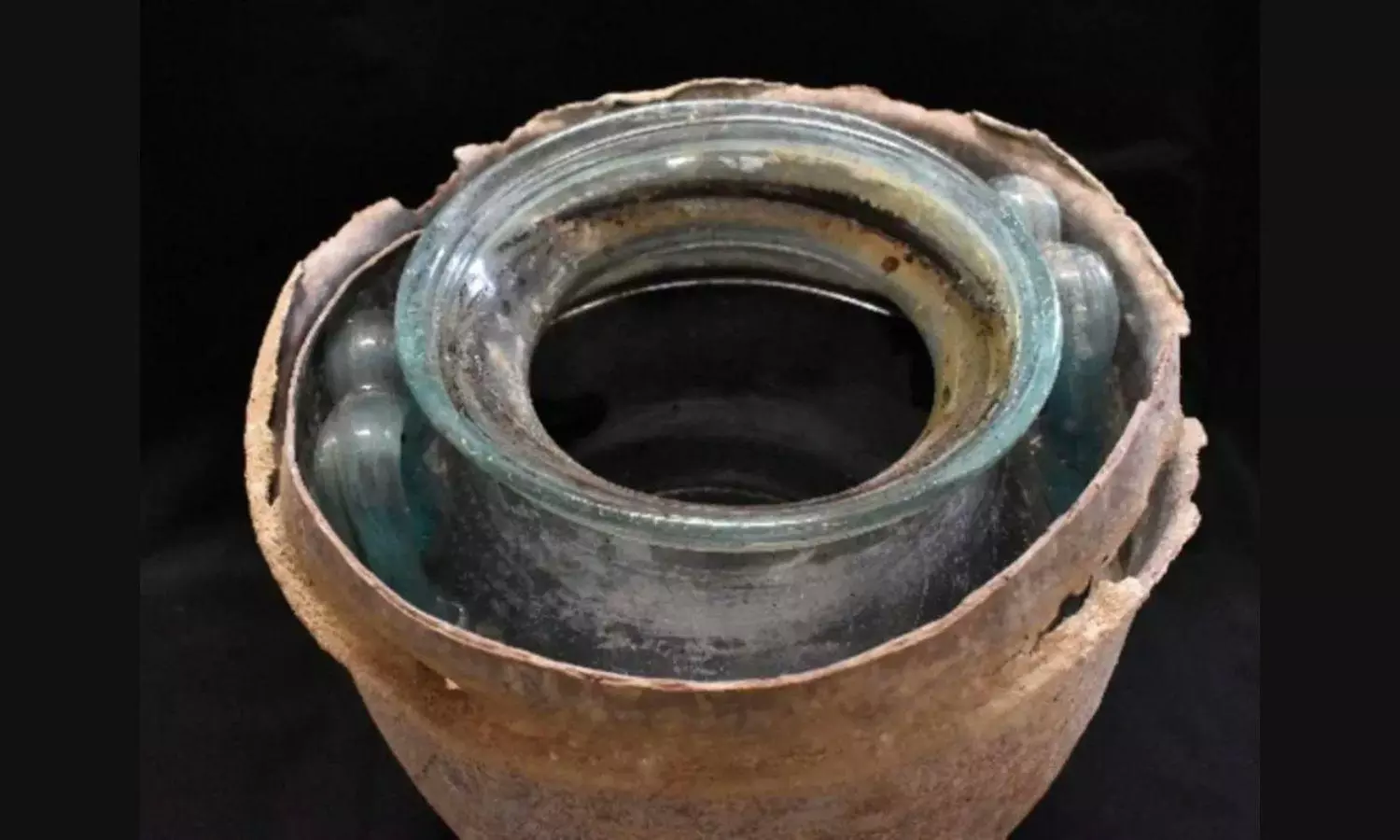2000-Year-Old White Wine Excavated in Spain

2000-Year-Old White Wine Excavated in Spain (Image Source: X)
Hyderabad: In a recent archaeological discovery, a 2000-year-old glass funeral urn filled with preserved white wine has been excavated in a Roman tomb in Carmona, Spain.
The beverage now has been given the title of "Oldest wine ever discovered," which surpassed the various records held by the Speyer wine bottle from 1867, which dated back to the fourth century AD.
The well-preserved urn, which had been sealed and shielded from external elements including leaks and floods, ensured the wine's original state stayed undisturbed. The tomb was found in 2019.
To verify the identity of the liquid, an in-depth chemical analysis was carried out, by a team of chemists from the University of Cordoba which was led by Professor Jose Rafael Ruiz Arrebola.
The findings were published in the Journal of ‘Archaeological Science: Reports.’
The City of Carmona's municipal archaeologist, Juan Roman, explained, "At first, we were very surprised that liquid was preserved in one of the funerary urns." The extraordinarily conservative conditions of the tomb allowed the wine to maintain its natural state for millennia, which ruled out other causes such as floods, leaks, or condensation processes.
The research team at the University of Cordoba's Central Research Support Service [SCAI], ran a series of chemical analyses in order to confirm whether the reddish liquid is a wine or any degraded substance.
They examined the pH, mineral salts, absence of organic matter, and the presence of specific chemical compounds related to the glass of the urn or the bones of the deceased. The initial proof that the liquid was, in fact, wine came from comparisons with Montilla-Moriles, Jerez, and Sanlºcar wines.
The biomarkers found in all the wines, polyphenols, held a secret to its identification. By using advanced methods that could distinguish these substances in extremely small amounts, the team discovered seven distinct polyphenols that are also found in wines from Sanlºcar, Jerez, and Montilla-Moriles. The wine was identified as white because it lacked syringic acid, a polyphenol often found in red wines. In spite of this, the researchers explained that the acid might have disappeared because of deterioration over time.
It was difficult to determine the wine's provenance because no samples from the same time period could be compared. On the other hand, the mineral salts found in the tomb's contents match the white wines that are currently made in the area, which used to be part of the province of Betis, particularly the wines from Montilla-Moriles.
It was difficult to determine the wine's provenance because there were no samples from the same period to be compared. On the other hand, the mineral salts found in the tomb's contents match the white wines that are currently made in the area, which used to be part of the province of Betis, particularly the wines from Montilla-Moriles.
The discovery also shows the gender divisions and Roman funerary customs. The practice of submerging the man's skeleton remains in the wine reflected the old Roman prohibition on women consuming wine, while the woman's remains were held in the urn that contained, the amber jewelry, perfume bottle, and remnants of fabric. This illustrates the different funeral customs for men and women.
The tomb was probably a circular mausoleum and inhabited by a wealthy family. It was situated by a major road that connected Carmo with Hispalis (Seville), and it was probably a circular mausoleum inhabited by a wealthy family.
The discovery also shows the gender divisions and Roman funerary customs. The practice of submerging the man's skeleton remains in the wine reflected the old Roman prohibition on women consuming wine, while the woman's remains were held in the urn that contained, the amber jewelry, perfume bottle, and remnants of fabric. This illustrates the different funeral customs for men and women.
The tomb was probably a circular mausoleum and inhabited by a wealthy family. It was situated by a major road that connected Carmo with Hispalis (Seville), and it was probably a circular mausoleum inhabited by a wealthy family.
( Source : Deccan Chronicle )
Next Story

